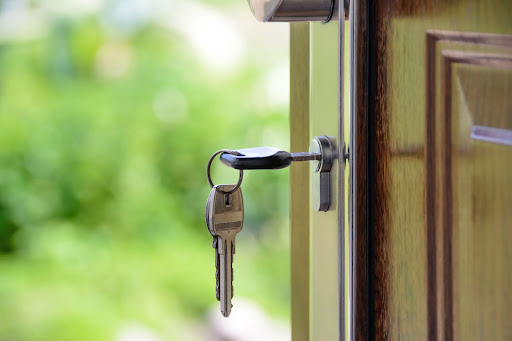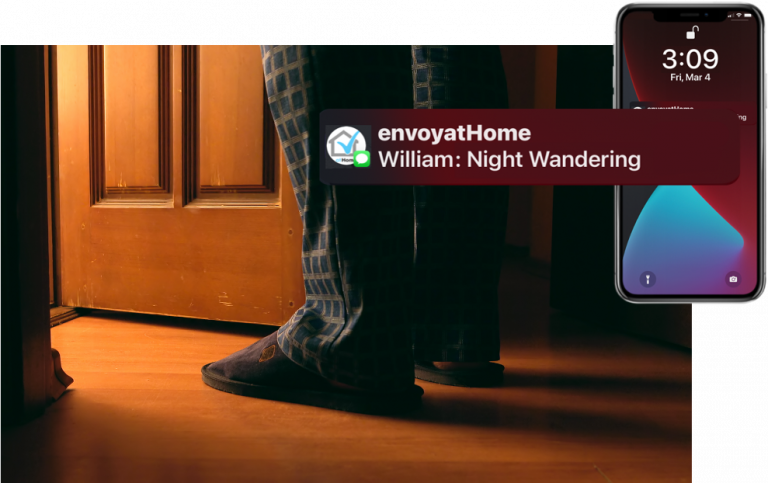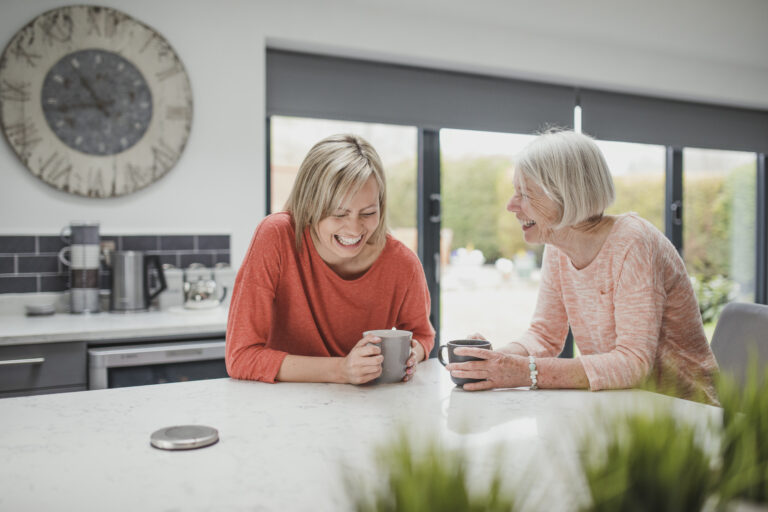Are you a remote caregiver struggling to ensure your elderly loved one’s safety at home? Do you find yourself constantly worrying about their well-being while trying to balance your own responsibilities? It’s a common predicament for family caregivers, and many turn to emergency buttons and cameras as a solution. However, relying solely on these tools may not be as effective as you think. In this blog post, we will delve into some of the pitfalls that envoyatHome family caregivers have experienced with prior approaches to remote caregiving, and why they turned to a senior monitor for elderly monitoring instead.
The Misleading Security of Emergency Buttons
Relying on a personal emergency response system appears to be a sound strategy in safeguarding our elderly loved ones. The concept is simple and reassuring: at the push of a button, help will be on the way. However, the efficacy of these devices is deeply entangled with the wearer’s ability to use them appropriately. We must confront the uncomfortable truth that cognitive decline can erode the reliability of an older adult to use these systems. For those suffering from memory loss or dementia, the routines of charging and wearing their device, let alone recognizing when it’s necessary to summon help, become insurmountable challenges.
Consider the heart-wrenching experience of a remote caregiver like Steven C. from Rhode Island, who, after the passing of his father-in-law, equipped his mother-in-law with an emergency pendant and a cell phone. He fully believed he had secured a lifeline for her. Tragically, this belief was shattered not once, but twice, as she suffered falls and either couldn’t or wouldn’t activate the emergency button. In one instance, she lay disoriented after a fall carrying a laundry basket on the basement stairs; in another, pride or fear of losing her independence kept her from seeking help after a bathroom slip. These incidents starkly illustrate the device’s limitations when users are too confused, injured, or overwhelmed to press the button. In Steven’s own words, “the ER doc told me he sees this all the time.”
This false sense of security is a common regret among caregivers, who realize too late that the device alone cannot always ensure their loved one’s safety. The assumption that a compromised older adult can manage their own safety and care leaves both caregivers and their elderly loved ones vulnerable. As we navigate the complexities of providing care from a distance, it’s crucial to recognize the limitations of relying solely on emergency buttons and consider more layered approaches including senior monitoring.
The Illusion of Cameras and Fall Detection
In the innovative landscape of remote caregiving, the allure of cameras positioned throughout a loved one’s home has gained traction. The premise offers a semblance of direct oversight, promising caregivers the ability to visually confirm the well-being of their elderly family members at a moment’s notice. Yet, the reality of implementing such a surveillance-based approach often falls short of its intended promise. The critical zones within a home—the bedroom, the bathroom, and the staircases according to American Journal of Lifestyle Living, August 2020 are precisely where the risks of falls are profoundly elevated, yet most often are not within a camera’s range whether it be for privacy or the lack of an outlet.
These locations, documented to be the most common sites of accidents leading to emergency interventions, also happen to be the areas where the installation of cameras raises significant privacy concerns and practical limitations.
Older adults, valuing their dignity and privacy, frequently express discomfort at the notion of being monitored by cameras, a sentiment that cannot and should not be dismissed lightly. Additionally, the logistical expectation for caregivers to maintain a 24×7 watch over these feeds is both unreasonable and unsustainable. The stark reality is that cameras alone cannot provide the comprehensive solution needed for effective elder monitoring when neither their placement nor the ability to anticipate an emergency is reasonable.
Sadly, remote caregivers who rely solely on cameras identify fall victims AFTER they’ve fallen, with no insights into how long they’ve been suffering. This is where the integration of an advanced elderly monitoring system, designed to respect the autonomy and privacy of seniors, becomes indispensable. By combining the use of strategically placed cameras with a robust monitoring system, caregivers like Susan R. from New Jersey have discovered a balanced approach. Such systems can alert caregivers to potential issues without requiring constant surveillance, offering targeted insights when and where they’re most needed. Susan would view the camera feed when she received an alert that her father might be at risk, enabling her to respond to his needs without guesswork. An elopement attempt and confusion from dehydration were all discovered and addressed resulting from her elderly remote monitoring system.
Judith L. of Ohio was alerted by her senior monitoring system to a situation where her mother had fallen in the early morning hours. Before getting dressed for the day, her mother was making a quick journey from the bedroom to the kitchen when she slipped and fell while on her way. The elderly monitoring system immediately notified Judith, who called the first responders when her mother didn’t answer the phone. Unfortunately her mother was not wearing her emergency pendant – she had decided to wait until she got dressed to put it on – and was both immobilized and overwhelmed when the first responders arrived a few minutes later.
For areas like bathrooms and bedrooms where cameras are not practical, discreet elderly monitoring systems bridge the gap, providing crucial alerts and enabling timely interventions, as evidenced by the invaluable alert Susan received about her father’s unusual night time activity, a time when Susan assumed her father would be asleep. This layered approach underscores the importance of leveraging technology that respects the privacy of seniors while ensuring their safety, ultimately dispelling the illusion that cameras alone suffice for fall detection and emergency alerts.
Senior Monitoring with No Regrets
In addressing the balance between the safety and dignity of our loved ones, modern elderly monitoring systems like envoyatHome meet the rigorous requirements for efficacy and privacy for both caregivers and independent older adults. These systems avoid the pitfalls of invasive approaches by forgoing the use of intrusive cameras, devices that listen and record, and cumbersome wearables that may be impractical for an adult on a cognitive journey.
By prioritizing discreet, fully passive forms of monitoring, these systems respect the autonomy and personal space of seniors, all while providing caregivers with the necessary insights to manage their responsibilities with lower caregiver stress.
This thoughtful approach to a discreet design recognizes the importance of independence in the lives of older adults and integrates almost invisibly into older adults’ daily routines without making them feel watched or infantilized. Innovations such as sensor technology and smart home integrations allow for a comprehensive yet respectful oversight, alerting caregivers to potential issues without compromising the senior’s sense of privacy. This balance ensures that the dignity of older adults is preserved, reaffirming that their autonomy and independence are paramount in the execution of caregiver duties.
Learn more at www.envoyatHome.com today.



